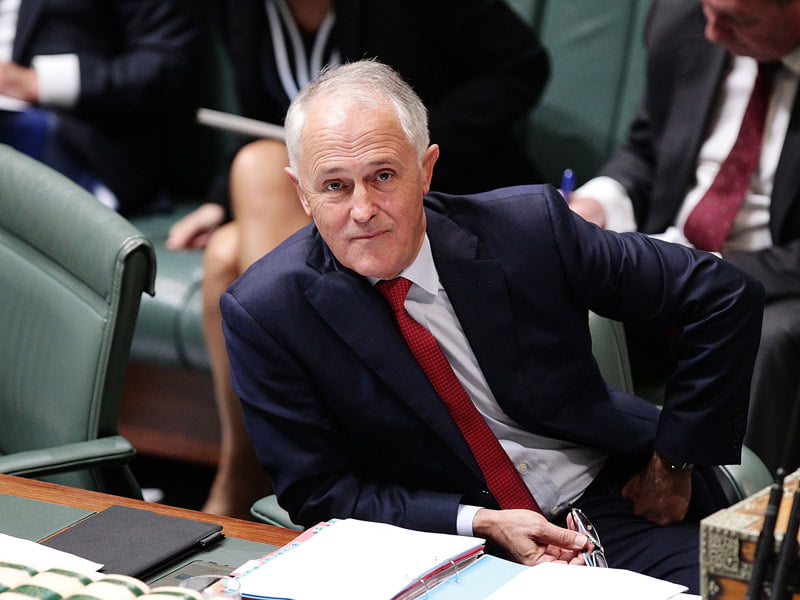The Turnbull government has today inked what is arguably the Coalition’s smartest bilateral economic agreement, particularly in terms of technology and innovation.
The so-called Australia-Singapore Comprehensive Strategic Partnership is a step up on a standard free trade agreement and comes with a headline value of $2 billion.
InnovationAus.com has long argued that Singapore is the country in the region with which Australia has the most in common. And it is the technology hub of Southeast Asia – although there is growing competition from Jakarta.

“Our two governments have agreed to a substantial new package of bilateral cooperation initiatives to give effect to the partnership, with a particular focus on integrating our economies through trade, strengthening our defence partnership, and accelerating our collaboration in innovation, science, research and technology,” the Prime Minister Malcolm Turnbull said in a statement.
The announcement had been planned for the visit of Singapore’s Prime Minister Lee Hsien Loong at the end of May, but this was postponed due to the looming Australian election expected July 2.
For the technology sector, the centerpiece was a S$50 million fund matching scheme, and a new alliance between Australia and Singaporean universities and research institutes (and yes, there was also confirmation that Singapore would be the last of the five offshore “landing pads” for Australian technology and innovation companies.
Mr Turnbull added that: “Our National Innovation and Science Agenda will be further boosted by greater collaboration between our key agencies such as CSIRO and Singapore’s A*Star and through business to business research.
“Australia will locate one of its five startup ‘landing pads’ in Singapore to promote innovation and entrepreneurship. This initiative will support emerging Australian technology companies to gain a foothold in Singapore, and the wider Asian market,”he said.
It’s the last piece that is the key here. Singapore is being used as a friendly base with a decent legal system for Australian companies to branch out into the wilds of the more populous places in Southeast Asia, particularly Indonesia and Vietnam.
As Trade Minister Steve Ciobo noted on ABC Radio: “We’ve got a long-standing relationship with Singapore. This agreement will actually help to forge people-to-people links, business links, trade ties, as well as defence links with the nation of Singapore.”
The other main pieces of the deal are two sectors where technology and innovation also play a central role: Defence, where Singapore has formalised long-standing arrangements (where its troops train in Australia) and agriculture, via the Singapore-Northern Australian deal.
“There is certainly a growing volume of Australians in the technology sector coming to Singapore – though we have always been well represented,” Australian Adam Lyle, executive chairman of Singapore-based Padang & Co and a board member of the Australian Chamber of Commerce in Singapore, told InnovationAus.com.
“As well, some of the Australians who have been here for a while are developing startups. As well a number are getting into the raft of accelerators in Singapore – there are a number of Australian companies, for instance, participating in the FinTech accelerators and others.”
“Singapore is very welcoming, they are encouraging expat tech people to come here and the landing pad is great news,” Mr Lyle added.
It’s noteworthy that Telstra, by far Australia’s leading technology company, now has a regional headquarters in Singapore for its ongoing Southeast Asia strategy aimed at the enterprise sector.
The company also has set up shop for its accelerator muru-D. In a recent interview with InnovationAus.com, Telstra Software Group chief Charlotte Yarkoni noted that Singapore is one of the key places she is spending her time.
Australia’s second biggest telecommunications company Optus, is owned by state controlled and Singapore-listed Singapore Telecommunications, another string tech link with the island nation.
For all this, the announcement of Singapore as the fifth and final (well at least for now) ‘landing pad’ was as tame and predictable as all the other landing pad decisions, with the arguable exception of choosing Berlin over London.
The budget papers had a whopping $2.4 million set aside for the Berlin and Singapore landing pads.
Only six months ago, Mr Turnbull set up narrative that Australia’s economy was pivoting to become one driven by technology and innovation.
Since then the narrative has changed so many times, it’s unclear what it is.
This deal helps to right the ship, somewhat.
Frankly, InnovationAus.cvom has its doubts about the ‘landing pads’ strategy.
Still, the strong focus on technology, innovation science in the deal with Singapore, one of the most connected and tech-savvy countries in the world, can only be encouraging.
And finally, another negative, as Australia’s government transparency took another blow during the official announcement.
With Deputy Liberal Leader and Foreign Affairs Minister Julie Bishop, Defence Minister Marise Payne, and the Trade Twins (padwan) Steve Ciobo and (Yoda) Andrew Robb, as well as three Singaporean Ministers the Australian media were allowed to ask a total of three whole questions.
And that’s for a good new announcement. Imagine what happens to bad news!
The Singaporeans, for all their wonderful traits, are hardly the world’s leaders in freedom of speech.
Do you know more? Contact James Riley via Email.

